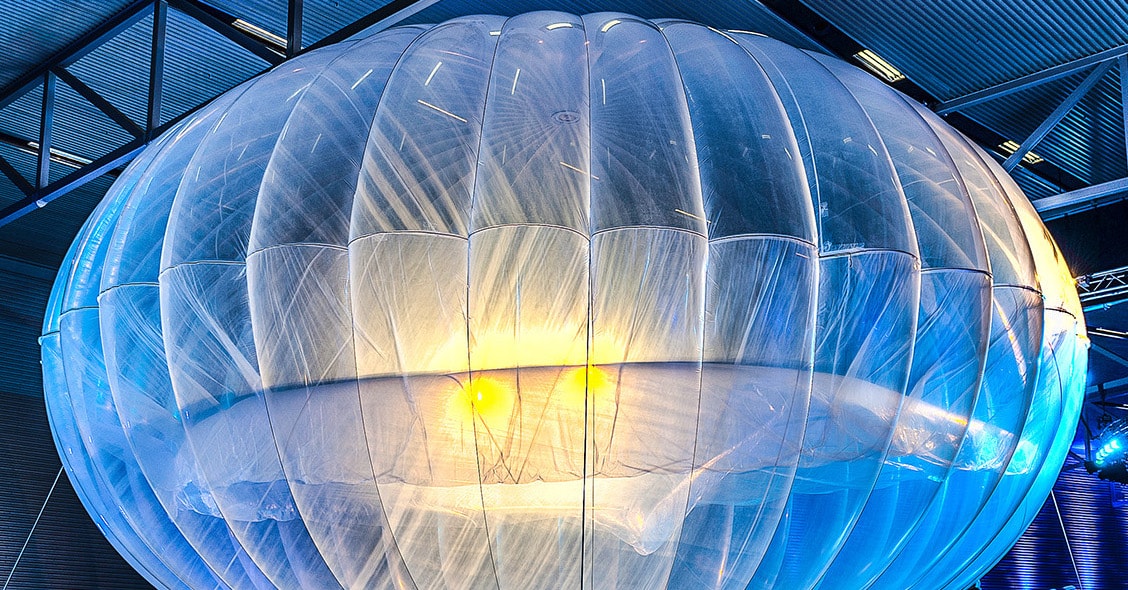Two innovative ideas to bring Internet access to hard-to-serve areas of the world – using drones and high-altitude balloons – seem to be progressing, even though the two companies pushing the projects aren’t offering a lot of details.
Facebook’s Aquila, using solar-powered drones as wireless Internet relays, and Google sister company X’s Project Loon, using large hot-air balloons in a similar way, both received significant attention when announced earlier in the decade.
In recent years, both projects have plugged along, even as some critics have doubted their long-term viability. While the projects have garnered less attention in recent years, Facebook launched test flights of an Aquila drone in June 2016 and May 2017.
Recent weeks have brought new updates about both initiatives, although the companies still aren’t talking much.
On June 27, Facebook announced it will stop building its own drones. While some early news reports suggested that Facebook was shutting down its drone-based Internet initiative, the company emphasized that it would instead depend on other companies to build aircraft.
“Going forward, we’ll continue to work with partners like Airbus on [high-altitude] connectivity generally, and on the other technologies needed to make this system work, like flight control computers and high-density batteries,” Facebook director of engineering Yael Maguire wrote in a blog post.
Facebook declined to comment further on Aquila. It’s not clear whether the company will explore other ways, besides drones, to provide high-altitude Internet access.
Aquila apparently isn’t Facebook’s only broadband initiative. This month, Wired reported that the company has launched a satellite broadband project that would compete with SpaceX and other companies working on satellite Internet services.
Meanwhile, Project Loon balloons have been deployed in some limited settings since the idea began beta testing back in 2011. In late 2017, X deployed balloons over Puerto Rico after Hurricane Maria – providing basic Internet service to about 200,000 people – and the balloons have made appearances after other disasters.
Then, early this month, the government of Kenya announced it will consider using Project Loon balloons to connect rural areas to the Internet.
Project Loon representatives were talking with Kenyan telecom operators about deploying the technology, Joe Mucheru, Kenya’s Information, Communication and Technology minister, told Reuters.
Representatives of X, Google parent Alphabet’s moonshot company, didn’t answer a request for comments on the project, including timelines for a broader rollout.
One aerospace engineer questioned the long-term viability of either project, however. Several other organizations have worked on similar projects, with no success, noted Iain McClatchie, a former Google employee. For example, the 1998 Scaled Composites Model 281 Proteus, a high-altitude, long-endurance airplane, was originally designed to be a telecom relay, but has moved on to other uses.
High-altitude, long-duration aircraft haven’t made a lot of improvements in the last 20 years, McClatchie said. “Both Google and Facebook jumped in with the hope of quick gains on the airframe because they figured that kind of design hadn’t been explored before,” he said. “It had. No quick gains.”
Drone-like telecom relays face several challenges, including power consumption and interference issues, he added. “It seems to me that the high-altitude airplane-supplied Internet idea lacks a viable airframe,” McClatchie said. “Maybe Airbus can make some headway here. I doubt it.”
And as Facebook and X have worked on their projects, other ways to provide Internet to remote areas have emerged. SpaceX and other satellite companies are pushing forward with large-scale, low-orbit constellations that could bring broadband to a wide swath of the Earth.
The drone, balloon, and satellite broadband models all face competition from traditional mobile broadband, and mobile broadband has the biggest growth potential, McClatchie said.
“There is the elephant in the room: Internet access is switching to mobile phones,” he said.
Read A Policy Framework for Enabling Internet Access, which provides a framework for policymakers to bring Internet access to everyone.
